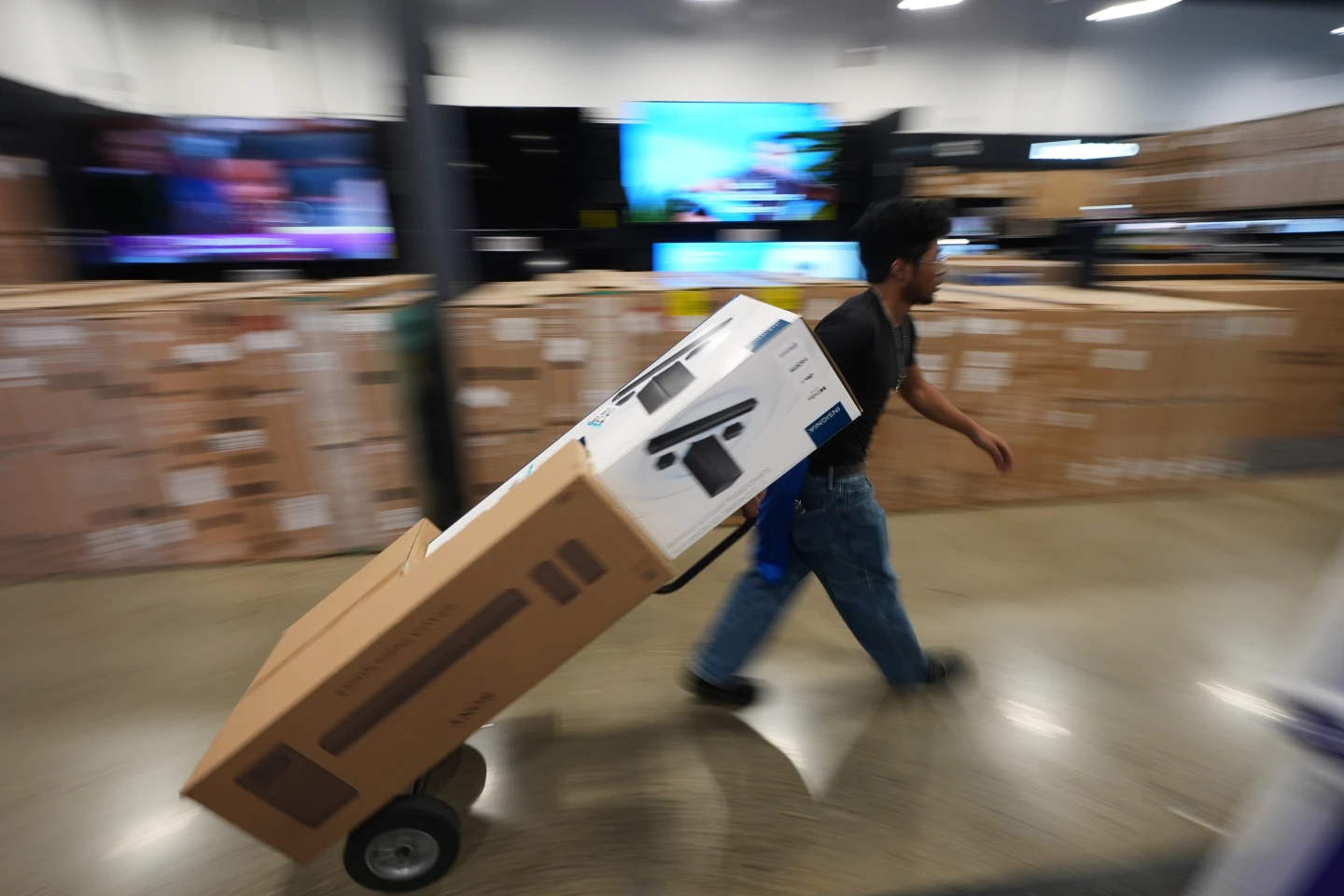With input from CNBC and Bloomberg.
Best Buy is finally getting a little of its spark back.
The electronics giant raised its full-year sales and profit forecast on Tuesday after shoppers showed up to upgrade laptops, gaming consoles and smartphones in its latest quarter — a welcome shift after three straight years of declining annual sales.
Best Buy now expects full-year revenue between $41.65 billion and $41.95 billion, nudging its outlook slightly above last year’s $41.53 billion in sales and above its previous forecast.
It also lifted its adjusted earnings per share guidance to $6.25–$6.35, from an earlier range of $6.15–$6.30.
Comparable sales — a key retail metric that tracks performance at stores and online over at least 14 months — are now expected to grow 0.5% to 1.2% for the year. Previously, the company had been bracing for anything from a 1% decline to a 1% increase.
For the fiscal third quarter that ended Nov. 1, Best Buy beat Wall Street expectations:
- Earnings per share (adjusted): $1.40 vs. $1.31 expected;
- Revenue: $9.67 billion vs. $9.59 billion expected.
Shares jumped about 5% in Tuesday morning trading, though the stock is still down roughly 12% for the year, compared with a 14% gain for the S&P 500.
On the company’s earnings call, CEO Corie Barry said demand was strongest in:
- Computers and laptops;
- Gaming systems and consoles;
- Mobile phones.
Wearables and headphones also saw growth, with sales rising both in stores and online.
This was Best Buy’s best comparable sales growth in four years — up 2.7% overall, including 2.4% in the US That strength helped offset weaker sales in home theater and appliances.
Barry said shoppers are still careful, but they’re not completely tapped out.
“Customers remain resilient, but deal-focused and attracted to more predictable sales moments,” she said, pointing to back-to-school season and Best Buy’s October sale that overlapped with Amazon’s Prime Day-style event.
And while people are more cautious about big-ticket purchases, she added, they will spend on expensive tech “when they need to or when there is technology innovation” — such as AI-enabled laptops, new iPhones and the latest gaming launches.
Despite the upbeat quarter, Best Buy isn’t declaring victory. The company warned that the crucial holiday period could be softer than the third quarter.
For the current quarter, it expects comparable sales to land somewhere between a 1% drop and a 1% gain.
CFO Matt Bilunas said Best Buy is seeing “positive growth” so far in the fourth quarter, but tougher year-over-year comparisons and cooling trends in some categories — like gaming and wearables — could weigh on results. Sales of the Nintendo Switch 2, for example, aren’t as hot now as they were closer to launch.
“Obviously, the holiday is never easy to predict,” he said. “We have a range of scenarios, and the range we’ve provided gives us a great place to plan our business operationally.”
Barry said shoppers are clearly making tradeoffs. Instead of splurging on top-of-the-line TVs, many are opting for midrange or budget models. But she argued that Best Buy’s wide selection of brands and price points is helping it attract more lower-income and younger customers.
The retailer says it’s ready for Black Friday, Cyber Monday and beyond, with “deals across the spectrum” no matter when people choose to shop.
Higher tariffs are another complication hanging over the back half of the year — for both retailer costs and consumer budgets.
So far, though, Bilunas said tariffs haven’t meaningfully pushed up Best Buy’s prices or hurt demand. Electronics are already a heavily promotional category, he noted, which has helped mute any price spikes.
Growth, he said, is coming more from unit sales than from higher price tags.
Inside its stores, Best Buy is trying to give shoppers more reasons to visit and play with devices in person.
Barry said the company has rolled out:
- Immersive showcase areas for Meta’s latest AI-enabled smart glasses in more than 50 stores, with demand for demos outpacing available appointments.
- Pilot showrooms with Ikea in about 10 stores in Texas and Florida.
- Expanded displays from brands like Breville and Sharkninja, featuring gear for home baristas, home cooks, and customers interested in health and beauty devices.
Early signs from these efforts are “very positive,” Barry said, and the company will be watching closely during the holidays.
Best Buy also launched a third-party online marketplace in mid-August to dramatically widen its digital assortment. Just a few months in, the marketplace:
- Has more than 1,000 sellers,
- Offers 11 times more items online than Best Buy previously carried on its own,
- Is boosting sales in categories like accessories and small appliances, and
- Has lower return rates than first-party items, with over 80% of returns handled in stores.
As the marketplace grows, Barry said it’s already helping margins and opening new opportunities to sell online ads to vendors.
Not everything is working in Best Buy’s favor.
Appliances remain one of the toughest categories, Bilunas said. Historically, Best Buy did well selling full sets of premium appliances to people outfitting new homes or doing big remodels.
With the housing market slowing and fewer people moving, shoppers are more likely to replace just the broken appliance — a lone washer or fridge — rather than splurge on matching kitchen or laundry sets. Promotions haven’t done much to change that.
To compete harder, Best Buy plans to:
- Put more staff in the appliance department,
- Speed up deliveries,
- And offer same-day delivery for some items.
The hope is that when the housing market eventually picks back up, appliance sales will “swing back to something a little more normal,” Bilunas said.
After a long stretch of sliding sales, Best Buy is finally getting a lift from a burst of tech upgrades and new gadgets. The real test now is whether that momentum — and a very carefully planned holiday playbook — can carry into next year.










The latest news in your social feeds
Subscribe to our social media platforms to stay tuned